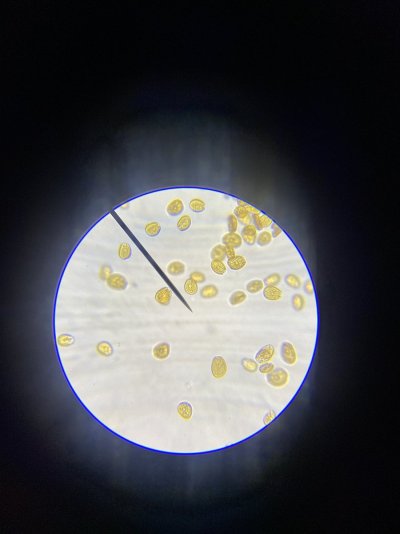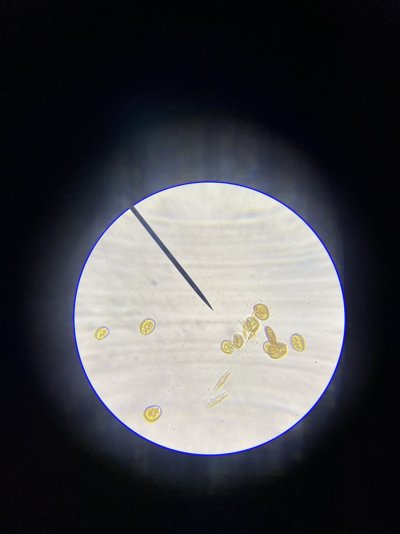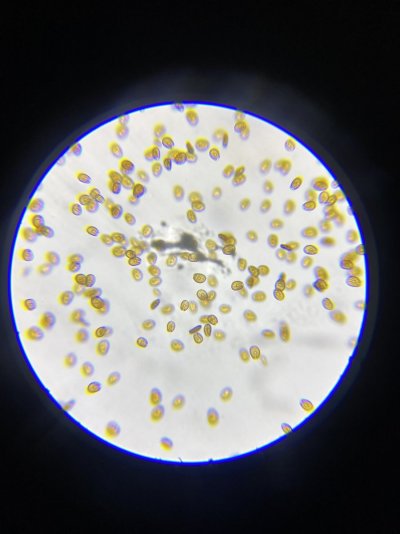Navigation
Install the app
How to install the app on iOS
Follow along with the video below to see how to install our site as a web app on your home screen.
Note: This feature may not be available in some browsers.
More options
You are using an out of date browser. It may not display this or other websites correctly.
You should upgrade or use an alternative browser.
You should upgrade or use an alternative browser.
Amphidinium Dinoflagellate? Microscope pics - please confirm.
- Thread starter Reefer Dan
- Start date
- Tagged users None
Thanks for your help! Any idea or tips how to identify if it is small or large Amphidinium? It seems like one is worse than the other.yep!
- Joined
- May 22, 2016
- Messages
- 6,525
- Reaction score
- 10,058
Large Cell.
Edit: to answer the question on how to tell, in the second picture the diatoms give an approximate scale to say what size we are dealing with.
Specifically, the diatoms with the curved pointy ends are likely cylindrotheca, and the central pigmented part, the chloroplast on that type is pretty consistently 20 to 30 microns.
Edit: to answer the question on how to tell, in the second picture the diatoms give an approximate scale to say what size we are dealing with.
Specifically, the diatoms with the curved pointy ends are likely cylindrotheca, and the central pigmented part, the chloroplast on that type is pretty consistently 20 to 30 microns.
Last edited:
Thanks so much for the ID and answer, it was extremely helpful to see your explanation!Large Cell.
Edit: to answer the question on how to tell, in the second picture the diatoms give an approximate scale to say what size we are dealing with.
Specifically, the diatoms with the curved pointy ends are likely cylindrotheca, and the central pigmented part, the chloroplast on that type is pretty consistently 20 to 30 microns.
- Joined
- May 22, 2016
- Messages
- 6,525
- Reaction score
- 10,058
sure! Diatoms like cylindrotheca that show up in literally every hobby system make for a nice natural microscope scale bar.
Can you expand on why Large Cell Amphidiniums are worse or better than small cell Amphi?sure! Diatoms like cylindrotheca that show up in literally every hobby system make for a nice natural microscope scale bar.
- Joined
- May 22, 2016
- Messages
- 6,525
- Reaction score
- 10,058
Large cell are less toxic, and hug the sand more. They are unlikely to make it up high on rocks or on/near Coral. They are more likely to be eaten by grazers without the snails crabs Etc dying. They mostly are nuisances just because they look Brown and unattractive. They are pretty low risk.Can you expand on why Large Cell Amphidiniums are worse or better than small cell Amphi?
Small cell amphidinium are more likely to be toxic, and move much more and faster under the microscope, and are better swimmers. They go into the water and can attach higher up in a tank. They are more likely to cause problems with coral, but they can also be targeted by UV, because of the same reason. They go into the water and are not restricted just to the sand.
Wow! Thanks I will be getting a really nice microscope, I ordered it online.Large cell are less toxic, and hug the sand more. They are unlikely to make it up high on rocks or on/near Coral. They are more likely to be eaten by grazers without the snails crabs Etc dying. They mostly are nuisances just because they look Brown and unattractive. They are pretty low risk.
Small cell amphidinium are more likely to be toxic, and move much more and faster under the microscope, and are better swimmers. They go into the water and can attach higher up in a tank. They are more likely to cause problems with coral, but they can also be targeted by UV, because of the same reason. They go into the water and are not restricted just to the sand.
I really want to know if I have the large cell from the cheap video I did with $20 target toy microscope?
Can you have both types in tank at same time ornis another more dominant?
- Joined
- May 22, 2016
- Messages
- 6,525
- Reaction score
- 10,058
I can't say which, but it's totally possible to have any of our problem dinos at the same time.Wow! Thanks I will be getting a really nice microscope, I ordered it online.
I really want to know if I have the large cell from the cheap video I did with $20 target toy microscope?
Can you have both types in tank at same time ornis another more dominant?
Similar threads
- Replies
- 10
- Views
- 760
- Replies
- 10
- Views
- 224
- Replies
- 38
- Views
- 1,041
- Replies
- 9
- Views
- 497


















